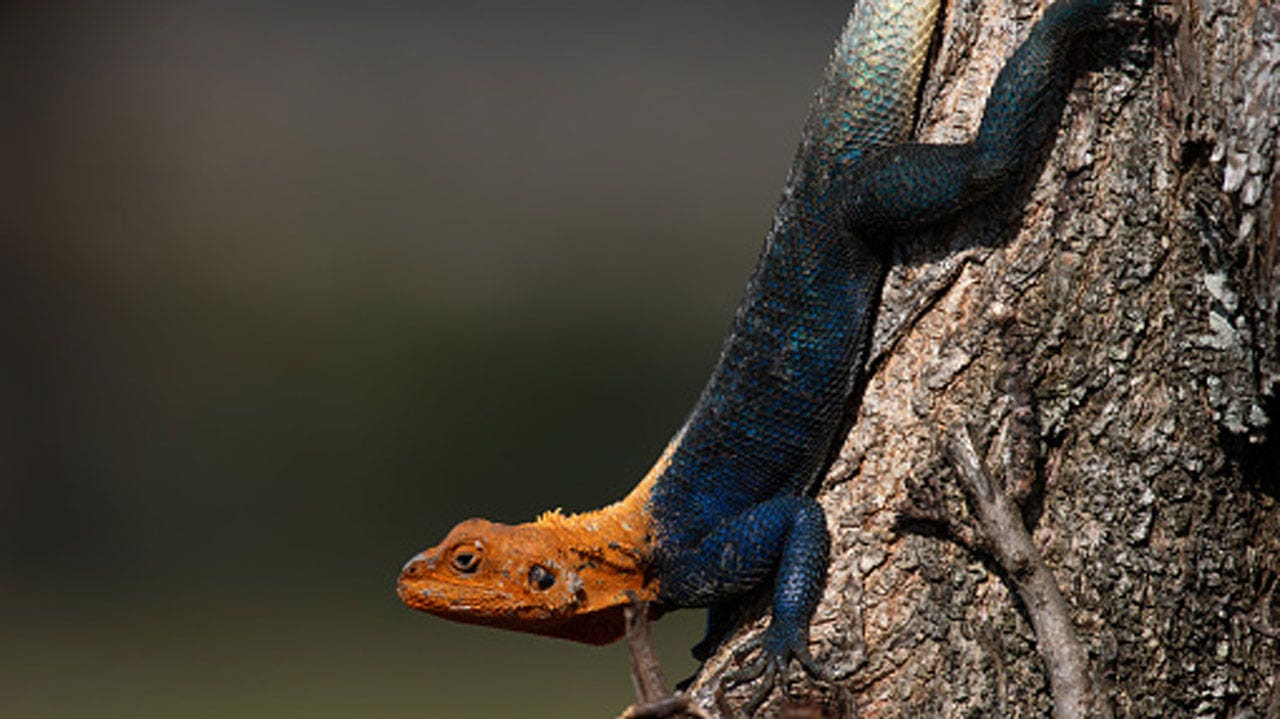An invasive lizard from Africa that has settled in South Florida was spotted moving up the coast of the Sunshine State.
The Peter’s rock agama has made its way north to parts of Central Florida, with residents of West Melbourne taking notice of the red-headed reptiles.
“I saw the head. It is red, and it’s pretty abnormal, and I have never seen a lizard that big,” residentJingchen Bitold FOX35 Orlando.
Ken Gioeli, a natural resources extension agent with the University of Florida, told the station that he refers to the lizards’ move up the coast as “the invasion front.”
IGUANA REMOVED FROM MIAMI KITCHEN CABINET AFTER ‘DASHING RIGHT INTO THE HOUSE’
A Peter’s Rock Agama lizard is seen in South Florida. (iStock)
“They’re causing some impact to the environment, but we still don’t yet have a total handle on what it is that they’re doing,” he said.
ThePeter’s rock agama was first documented in Florida in 1976, and has since established its presence in 20 counties, from Monroe to Volusia, according to the Florida Fish and Wildlife Conservation Commission (FWC). The species is native to tropical, sub-Saharan Africa.
The lizard, native to tropical, sub-Saharan Africa, is believed to have been released into Florida around 1976 via the pet trade. (iStock)
The lizards’ size and high population densities may impact other species by preying upon native species and competing with them for resources, according to wildlife officials.
VIDEO SHOWS FLORIDA AUTHORITIES WRANGLE ALLIGATOR THAT WANDERED ONTO AIR FORCE BASE TARMAC
The species feeds mostly on ants, grasshoppers, crickets and other insects, according to the FWC, but has also been seen eating snakes, lizards, birds and small mammals.
Adult malePeter’s rock agamas can grow to be 12 inches long, while females of the species can reach lengths of 4 to 5 inches.
It is believed the lizard was introduced to Florida as pets that either escaped or were released.
As for whether the budding population can be controlled, the FWC says that “eradication ofestablished populations in Florida is likely not feasible.”



